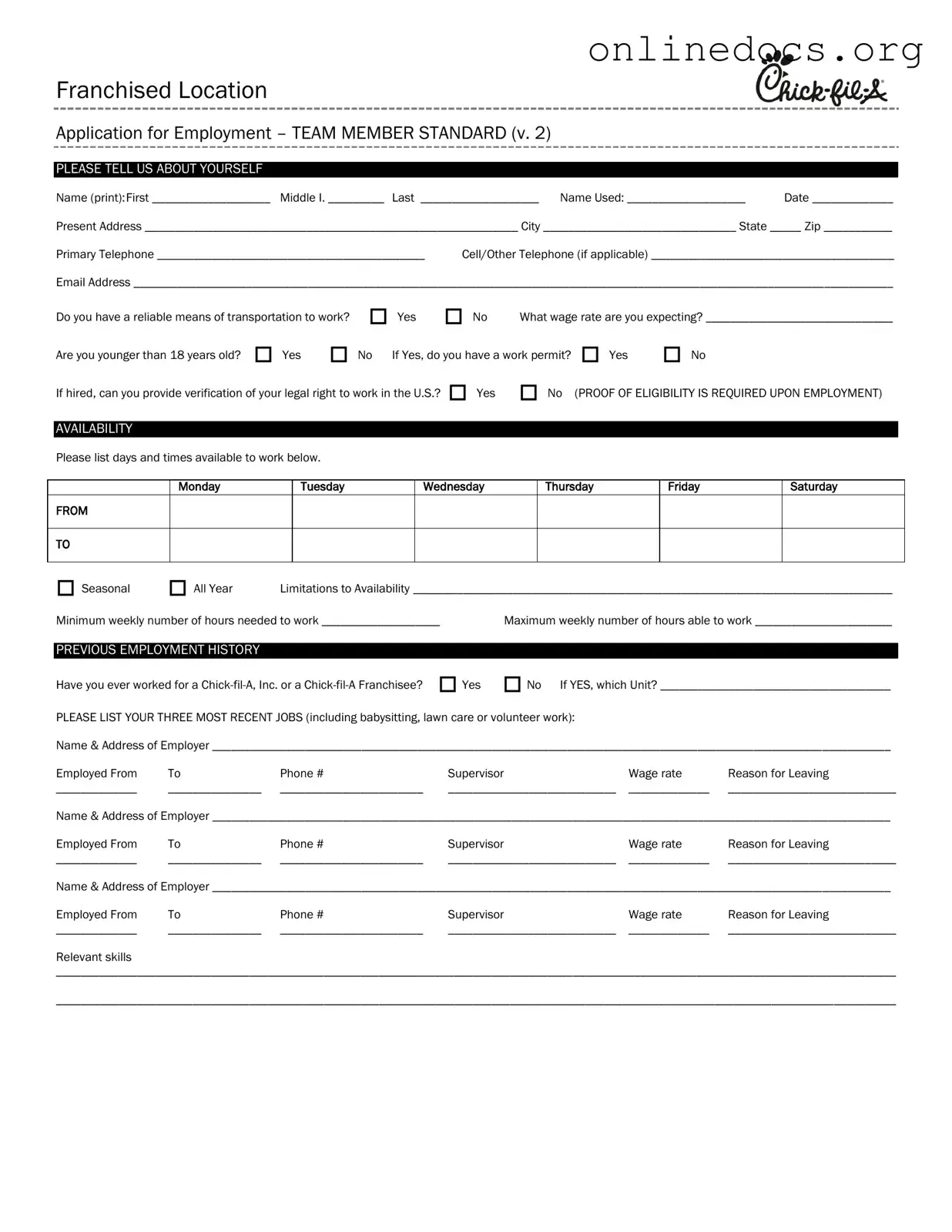The Chick-fil-A job application form shares similarities with the standard employment application used across various industries. Typically, this form collects essential personal information, work history, and educational background. Much like the Chick-fil-A application, standard employment applications often require applicants to detail their skills and qualifications. This information helps employers assess whether a candidate is a good fit for the position they are applying for.
Another document that resembles the Chick-fil-A job application is the resume. A resume provides a summary of an individual's work experience, education, and skills. While resumes are often more concise and tailored to specific job openings, both documents serve the purpose of showcasing a candidate's qualifications. In many cases, employers may request a resume alongside the job application to gain a more comprehensive view of an applicant’s background.
The cover letter is also akin to the Chick-fil-A job application form. This document typically accompanies a job application or resume and allows candidates to express their interest in the position. Like the application, a cover letter highlights relevant experiences and skills. It serves as an opportunity for applicants to convey their personality and enthusiasm, which might not be as evident in the more structured format of a job application.
Job seekers often encounter the online application form, which has become increasingly popular. This digital format mirrors the Chick-fil-A job application by requesting similar information, such as personal details and work history. Online applications may streamline the process, allowing candidates to submit their information quickly and efficiently. Both forms aim to gather the necessary information to evaluate potential employees.
The internship application form is another document that shares characteristics with the Chick-fil-A job application. Internships often require applicants to provide their educational background, work experience, and skills. Just like the Chick-fil-A application, these forms help employers determine whether candidates possess the qualifications needed for the role. Internships are often a stepping stone for many individuals entering the workforce.
Volunteer application forms also exhibit similarities to the Chick-fil-A job application. These forms usually ask for personal information, previous volunteer experiences, and skills relevant to the position. Both types of applications aim to assess an individual's suitability for a role, whether in a paid position at Chick-fil-A or a volunteer opportunity elsewhere. The underlying goal remains the same: to connect individuals with opportunities that match their skills and interests.
In addition, the scholarship application form is comparable to the Chick-fil-A job application. Scholarship applications typically require candidates to provide personal information, academic achievements, and extracurricular activities. Both documents seek to evaluate an applicant's qualifications and commitment. Scholarship committees, like employers, want to understand the applicant's background and motivations.
When completing any form, whether it's for a job or a boat sale, clarity and accuracy are vital. If you're dealing with boat transactions, make sure to utilize the All Templates PDF to ensure all necessary information is captured, much like how applicants should be thorough when filling out job applications.
The rental application form is another document that parallels the Chick-fil-A job application. This form collects information about an applicant’s financial background, rental history, and personal references. Much like job applications, rental applications help landlords assess whether a potential tenant is a good fit for their property. Both types of applications require honesty and thoroughness to ensure a successful outcome.
Lastly, the college application form bears resemblance to the Chick-fil-A job application. College applications often require students to provide personal information, academic records, and extracurricular involvement. Both documents aim to present a complete picture of the applicant, helping decision-makers determine suitability for admission or employment. In both cases, the goal is to find candidates who align well with the organization's values and requirements.
